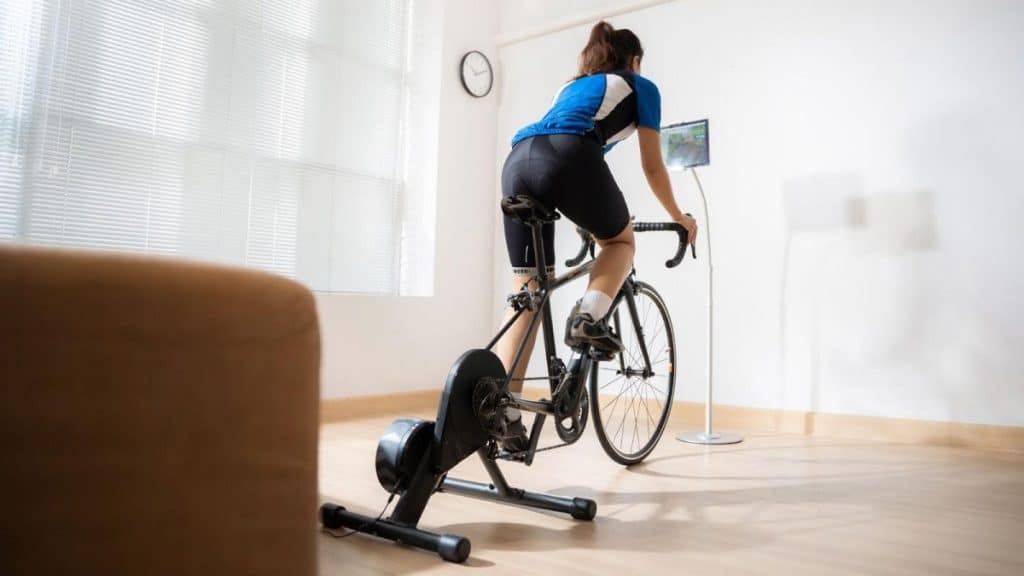Cyclists often have big dreams. But evening darkness, bad weather, or tight schedules can disrupt training. When battling rain, snow, or time constraints becomes too much, an indoor bike trainer is a great solution. It turns your bike into an exercise bike. It ensures you stick to your goals, no matter the season. The guide will cover everything. It starts with an introduction to indoor trainers and then shows you how to maximize their benefits. Enjoy biking and boost your training efficiency.
What is an Indoor Bike Trainer?
An indoor bike trainer lets you ride your bike without moving. It is popular among cyclists, fitness enthusiasts, and casual riders for its convenience. Unlike stationary bikes, it uses your outdoor bike indoors.
Types of Indoor Bike Trainers
There are two main types to match different needs.
Direct drive trainers
Direct drive trainers replace your bike’s wheel and attach it to the drivetrain. They offer the smoothest ride, limit slipping, and provide accurate power readings. Thus, they’re favored by professional cyclists.
Wheel-on trainers
In these trainers, you can attach a bike without removing the rear wheel. They are cheaper and more compact. The new oscillator (or mounting system) makes them affordable and convenient for many, not just professionals.
Reasons For Worthiness Of Investment
Indoor bike trainers are a must for fitness and cycling fans. Here are the reasons they are worth the investment.
● Year-round Usage
With a trainer at home, you can ride every day. There’s no need to worry about rain, icy roads, or hot weather.
● Adjustable Resistance
Trainers let us adjust resistance for flat, uphill, or downhill riding. This is great for tailoring programs in endurance, power, and recovery.
● Compact and space-efficient
Bike trainers are smaller than gym machines. Many folds up, making storage easy.
● Workout Variety
Trainers enable specific exercises, like interval training and endurance rides, indoors.
How to Fit an Indoor Bike Trainer
First, set up your trainer correctly for comfort and safety.
● Getting a Trainer
Consider your cycling goals and bike. Casual riders should choose a wheel-on trainer. Competitive cyclists need a direct-drive smart trainer.
● Set Up and Equip
Trainer Mat: Place a mat under your trainer to protect your flooring and reduce noise.
Riser Block: Helps later in adjusting the elevation of your front wheel for a comfortable riding position.
Sweat Guard: It prevents sweat from soaking into your bike’s frame during tough rides.
● Fit the Bike Accordingly
A proper bike fitting can relieve unnecessary stress on your back, hips, or knees in the event that you ride your bike for long hours. Long rides can be much improved by making minor changes.
Indoor Trainer Workouts
A bike trainer allows you to spin the pedals, but that is not all. It enables you to perform well-planned exercises effortlessly.
● Endurance Rides
Ideal for increasing endurance, these consist of slow-paced cycling for long hours, possibly with some breaks. An example would be riding for 60 to 90 minutes at a pace between 60 and 70 percent of greatest effort.
● Interval Training
Performing at peak levels for brief durations at a time, then resting before the next peak performance. Sprinting for 30 seconds, followed by 90 seconds of rest, is an effective interval for enhancing speed and strength.
● Hill Simulations
Increasing resistance in cycling workouts simulates steep hills. This boosts leg strength and cycling power.
● Recovery Sessions
Light pedaling with low resistance speeds up recovery. It removes lactic acid and reduces soreness after tough workouts.
Enhancing Your Indoor Cycling Experience
Avoiding monotony makes workouts more enjoyable. Here’s how:
- Use Interactive Apps: Platforms like Zwift or Wahoo’s SYSTEM make workouts engaging.
- Track Progress: Check speed, cadence, and power to stay focused and see improvements.
- Set the mood: Create playlists, listen to podcasts, or watch cycling videos.
Maintenance and Care
- Regular checks prevent damage and extend the life of your trainers and bike.
- After each workout session, you would need to care for your trainer by wiping it clean with a cloth to remove the components of sweat and dust.
- You might use a sweat guard. Also, lubricate your chain and rear cassette after long stationary use. It will be easier to clean them later.
Conclusion
Indoor bike trainers are essential for effective home workouts. They enhance weight loss and allow cyclists to train year-round, thanks to their engaging digital features. Every cyclist should have one. If you are willing to enhance your cycling routine, consider looking for options. There is no perfect weather. The ideal ride starts now.
